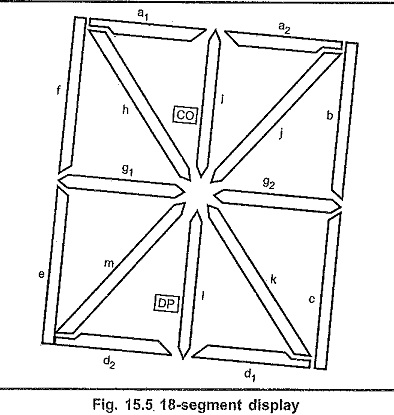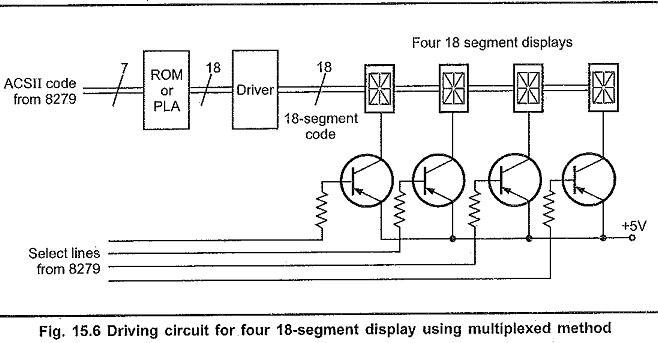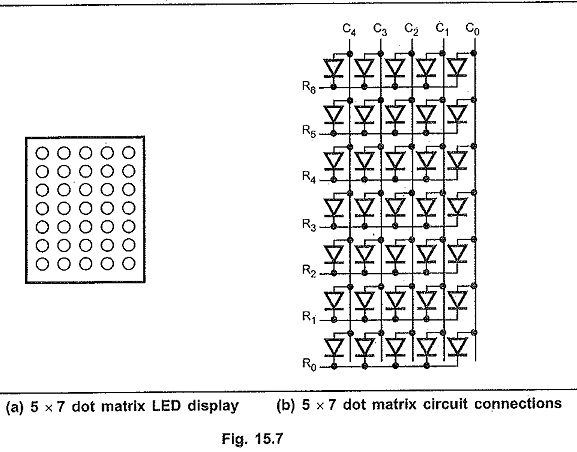18 Segment Display:
The Fig. 15.5 shows the 18 Segment Display. They are used to display numbers and alphabets.
Like 7-segment displays, 18 Segment Display are also interfaced through 8279 to the microprocessor. Here, instead of 7-segment code, ASCII codes for characters to be displayed are stored in the display RAM and then with the help of external RAM ASCII codes are converted into 18-segment codes.
The 18-segment codes are then sent to segment drivers to drive the 18 Segment Display. This is illustrated in Fig. 15.6.
5 x 7 Dot Matrix Display:
Fig. 15.7 (a) and (b) show the 5 by 7 dot matrix LED display and its circuit connections. This display can be used to display number as well as alphabets.
In these displays, instead of lighting an entire digit it is necessary to refresh one row or one column at a time in each digit. Usually, columns are refreshed. Here, we have to find the colun–mwise code for each character. These columnwise codes are necessary to send column by column in synchronisation with the activation of corresponding column.
The control circuitry required to implement such hardware is complex. Hence, Beckman instruments, Hewlett-Packard, and several other companies developed the integrated display/driver devices for driving dot matrix displays. Such devices require we to send only a series of ASCII codes for the character we want to display.


